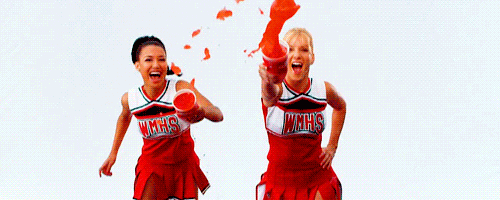Introduction
If you ask anyone who was a fan of Glee while it was airing what their favorite season was, they will probably answer season 2, and for good reason. Season 1 kept itself strongly grounded in reality and heterosexuality, and season 3 was when the show embraced fantastical mania and queerness in a vice grip, but season 2 is the perfect mix of the two. Season 2 is also the last time the show was able to maintain most of the creative control over the song selection; in later seasons the show devolved more and more into an iTunes Top Ten jukebox, throwing the narrative under the bus in exchange for that sweet, sweet iTunes cash. Season 2 is also when the show is at its most self aware, only taking itself seriously when it needed to, and keeping the guest stars to a minimum. In fact, season 2 might be the only season in which the guest stars enhanced the plot as opposed to hindering it.
While season 3 is my personal favorite, it is difficult to argue against season 2 being the objectively best season. The narrative is sharp and tight, but with plenty of breathing room for fun and mischief. It is serious when it needs to be, but never preachy, and there is a real feeling of genuineness to it’s more PSA-esque episodes that precious other television shows have managed to pull off. The music selection is incredible, with many of the show’s best arrangements and performances, even though many of the performers were still very young and still finding their vocal footholds. The show introduced several new regulars, including fan favorites Sam Evans and Blaine Anderson, and hit its sweet spot for cast size (a feat that it will never manage again for the rest of its run.) While your mileage may vary on the original songs, “Loser Like Me” is for better or worse the epitome of what this show is meant to be about. And while all of these things are amazing, the best thing about season 2 is the introduction of the two main canon queer pairings: Brittana and Klaine.
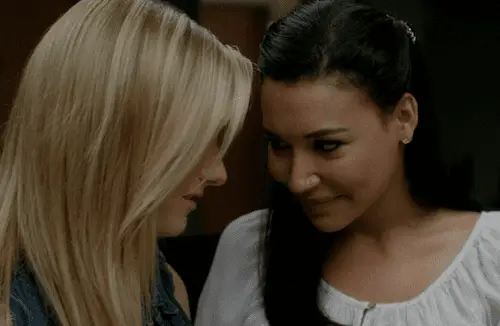
It’s actually sort of difficult to grasp the scope of the cultural significance of Brittana and Klaine. Even if you were a part of the fandom at the time, or old enough to remember the transition that these two ships helped spark in mainstream television and queer fandom culture, it’s still astounding because of 1.) how huge the cultural phenomenon was, and 2.) how recently it happened. As I discussed in part one of this article series, while the Spring Slaughter was absolutely horrific, it’s kind of staggering how much representation there was in the first place compared to when Glee jammed its foot in the door and proclaimed its queerness for all the world to hear. Episode 2×15, when Brittana made its unambiguously canon premiere, aired on March 8th, 2011. Klaine shared their first kiss in the very next episode. This was just under six years ago, but it feels like so much longer because of how much has changed since. It is important for everyone, both inside and outside of the queer community, to remember that this was only six years ago, because we need to hold onto that sense of perspective in order to view our current media with an educated lens.
Because let’s get serious for a second: if it were not for the canon queer ships, Glee would just be another popular and quirky, yet historically irrelevant, television show. Its cultural significance is in pioneering family-friendly queer content, because one of the things that truly helped turn public opinion around on LGBTQIA rights is making ourselves human to a heterosexual audience. It sounds like an almost ridiculous statement to make now, that we would need to be humanized, but the year before Glee premiered my home state and supposed “liberal paradise” California voted to ban gay marriage. This is not ancient history; this was less than a decade ago. And Glee is a big part of why so much changed in so little time.

But let’s move on to the happy stuff: why season 2 of Glee is such a delight to watch, and why you should spend a week(end) treating yourself to it. As I’ve said before, I’m not going to give you an episode by episode synopsis, as I do have a life and would like to be able to leave the house once in a while. But there are a few standout elements I want to discuss, because brilliance deserves recognition and a lot of season 2 is genuine brilliance. Let’s get started!
The Music
Yes, I am going to talk about “Landslide,” “Songbird,” “Blackbird,” and “Candles,” but not just yet. We’ll get there. Keep your pants on.
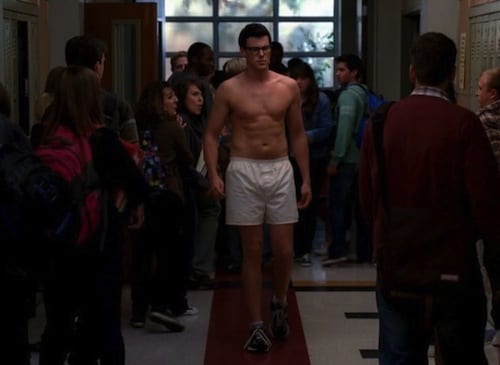
While the music selection in the first season of Glee was good, Holly Holliday put it best when she described the Glee club’s first season regionals setlist as “somebody else’s favorite songs.” The show even pokes fun at itself for this in season 2, with Will bursting into the Glee Club room and announcing that he “found some Journey songs we haven’t performed yet!” Not that Journey isn’t a goldmine of timeless classic rock numbers, but the show felt like it was catering to a much older audience in its first season than in the seasons to follow. It’s not that young people can’t appreciate the cultural significance of Madonna or be into early 2000’s hits like “The Thong Song” in theory, but let’s be real: nobody believes for a second that any of the Glee kids are old enough to be into Salt-N-Pepa or Lionel Richie. I’m not old enough to be into Salt-N-Pepa or Lionel Richie. I totally believe Mercedes Jones owns every definitive diva album in existence, but that’s the exception more than the rule; the show pushed the limits of my suspension of disbelief on a regular basis when it came to the songs that these 15-16-year-olds chose for themselves without Will literally shoving the sheet music into their hands.
In season 2, there seemed to be more mindfulness of the songs being 1.) in character, and 2.) if they weren’t, they were sufficiently set up so it was believable that the performers would have chosen these songs to sing. Another improvement made in season 2 was the breadth of songs covered. While both season 1 and season 2 featured a nice variety of songs, season 2 seems to have really hit the sweet spot between ‘relevant and contemporary,’ ‘timeless classic,’ and ‘broadway’s greatest hits.’ Season 2 also really hit a stride with its music theme episodes. Rumors (the Fleetwood Mac episode), Britney/Brittany (The Britney Spears episode), and The Rocky Horror Glee Show consistently make it into top ten episode lists, and it’s well deserved.
It is important to note that the primary reason these theme episodes hold up so well is because they still moved the story forward, as did the songs in episodes that were more pick-n-mix about their setlists. In true musical theater tradition, the songs were often staged as a natural extension of the dialogue, but with a whimsical or fantastical twist. Some songs were performed ‘in context,’ in that clearly what was happening on screen was really happening within the universe of the show, but the increased number of fantastical numbers really elevated the show from somewhat clever to unique and fresh.
Overall, many of the top hundred, or even top twenty, performances are in season two. Mash-ups also came into prominence in Season 2, giving us the quintessential Faberry number that elevated the ship from a fleet to an armada, among many other equally excellent arrangements.
If you watch for nothing else, watch season 2 for the musical numbers. The level of spectacle and stagecraft is incredible; the first place that Glee embraced its fantastical mania was in the musical numbers, and there is literally nothing else like it in this regard. If a shot-by-shot recreation of Britney Spears’ “I’m A Slave 4 U” video with a live snake and much better dancing, or John Stamos singing “Whatever Happened to Saturday Night?”, or a “Thriller/Heads Will Roll” mash-up in full zombie makeup during a football halftime show doesn’t put a smile on your face and a spring in your step, I don’t know how to help you, friend.
Words cannot describe the ridiculous extremes that the musical numbers hit this season. It is one of the things that made Glee the memorable and unique piece of media it continued to be right through season 6, even when the story was bludgeoned to pieces like a piñata at a little league party. It was never a true musical, but season 2 really hit the sweet spot between that and ‘a show with music in it.’ The bottom line is, from start to finish, season 2’s setlist rocked in every possible way. In no other show could you have “Don’t Cry For Me, Argentina,” “I’ve Had the Time of My Life,” “Hey, Soul Sister,” and “Valerie” in the same episode and make it work. But it did. And it was awesome.
Klaine
I’m going to be really upfront about this, because it’s going to be pretty obvious anyway I’m sure; I really, really do not like Blaine Anderson. I don’t like his voice, I don’t like his face, I don’t like his character, and I don’t like the man who plays him, Darren Criss. But this is a personal bias, and I will do my best in this article series to not let this get in the way of how I discuss Glee’s significance as a queer piece of media. Though I could talk about queer women representation on Glee all day, it would be disingenuous to not talk about Klaine, because in season 2 Klaine was the dominant queer ship by far. One might argue that Klaine was the dominant ship across the rest of the series as well, but I’ll get to that in a little bit. For now, let’s talk about how Glee got this pairing so right, even if it’s not my thing personally.
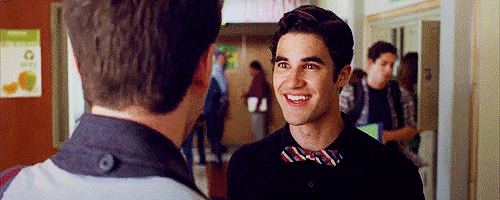
A big criticism of queer characters in media, and one that we still can’t seem to escape today, is how a queer character’s plot begins and ends with their coming out, and consists mostly of their suffering. Season 1 of Glee does follow this format, but it was reasonably clear even in season 1 that the show had bigger plans for Kurt Hummel going forward. Kurt’s coming out was only the first step in his character’s journey, not the finale. In season 2, the weight of being the only openly gay kid at McKinley is weighing heavily on Kurt’s body and soul. He is bullied constantly by David Karofsky, a huge, hulking brute of a boy who slams Kurt into lockers and calls him a h*mo at every chance he gets. We find out later that the reason David acts like this is because he too is gay, and his aggression towards Kurt is his coping mechanism for his internalized homophobia.
This is one of the best examples of what I mean when I say that Glee is a product of its time. In 2010, the “bully bullies gay kid because he’s secretly gay too” was already a dead horse, but we were still taking consistent whacks at it. That being said, it’s pretty apparent why Glee opted to use this trope. From a Doylist perspective, the show had a primarily heterosexual audience (shocking, I know), and this was an attempt to 1.) play lip service to a story they were familiar with, and 2.) build sympathy and empathy for Kurt from audience members who may have not been capable of it without taking this route. The queer audience found it hard to watch in its earnestness and genuineness, but the straight audience found it hard to watch too, and that was the point.
From a Watsonian perspective, if Kurt was going to get to Dalton Academy and Blaine, his family needed a big enough reason to remove him from his social safety net of the Glee Club and send him away to a very expensive private school. In theory, Blaine could have been introduced as a new character to McKinley right away, but this wouldn’t make a lot of sense. In season 2, the Glee club still has no social clout and they are bullied constantly, even the football players and cheerleaders. There is no way an out and proud kid like Blaine would survive at McKinley. Not yet, anyway.
The thing about Glee that carries the entire series, even through its darkest and most badly written moments, is that it is 1.) about safe spaces, 2.) a safe space for the audience, and 3.) about wish fulfillment. Dalton Academy represents the best of all three of these things. It is a private institution with all the trappings you would expect from an expensive, old-fashioned boys academy, except it has a zero-tolerance bullying policy that is actually enforced by both the staff and the students. If there was ever a truly and completely fantastical element of Glee, it is the idea that there is a school that existed in 2010 that was actually like this. Dalton Academy is heaven on earth. The idea that a show choir would be at the top of the high school food chain, even in a private institution like this, is utterly ridiculous. The high school I went to had such an amazing theater department, we got invited to perform in the Fringe Festival in Edinburgh, Scotland. Our marching band was equally prestigious, and all of our arts programs were excellent. Color guard had more trophies than all of the sports teams combined. But never did we have a hallway full of students clamoring to see an ‘impromptu performance’ of an acapella cover of some Top 40 Hit. Glee, please. There are episodes of Adventure Time more plausible than this.
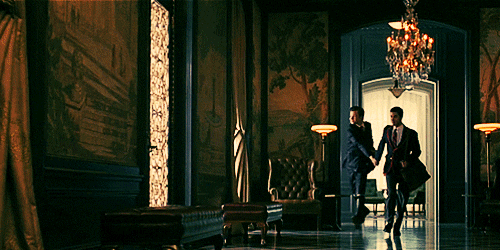
Nevertheless, this is wish fulfillment for a queer audience. Had I still been in high school while Glee was on, Dalton Academy could have been a great comfort to me, no matter how unbelievable it was. While Klaine definitely had their ups and downs across the show’s run, this fairytale-esque beginning certainly set the ship’s tone. I may not personally care for this ship, but I would be a liar if I said that scenes like the one above didn’t make my heart grow three sizes.
Klaine’s friendship and romance was so forefronted for the time, it sometimes felt like Kurt was the real hero of the show, and that was truly unprecedented. It took up far more screen time than anyone expected, and the romance actually becoming canon was genuinely surprising at the time, especially with the long buildup. The audience had been promised a canon queer relationship, but we had been promised that before; we were still half expecting it to begin and end with a few splashes of fanservice at best. During my rewatch, I was actually surprised by Klaine’s first kiss; I thought it was much farther along in season 2, or at the beginning of Season 3. But it was there, as was a complete romance arc with some really sweet and wonderful moments. I may not like Klaine, but you just can’t help but be charmed by how Blaine looks at Kurt during “Blackbird”…
… and watching them sing “Candles” together at Regionals.
If there’s one thing that has aged remarkably well about Glee, it’s this. The charming, sweet, fairytale romance between two young men with a truckload of product in their hair.
Brittana
I’m sure this will come as such a shock to you all, but Brittana is my OTP. Across all media, across all time, there will never be a character I relate to as much as Santana Lopez and a pairing I love as much as Brittana. And while I, like most queer women of the Glee fandom, did not find the show’s treatment of Brittana to always be fair or right, I still get deeply emotional just thinking about them. A hug gif is enough to get me choked up sometimes. That’s how much I love this pairing, and it’s ultimately the reason why I will always go to bat for this show.
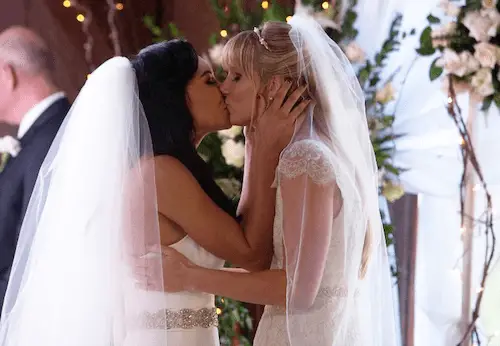
Brittana was truly the little ship that could. What started as a small, blink-and-you’ll-miss-it joke from season 1 launched a queer lady armada, sustained by the tiniest of crumbs through season 1 and the early half of season 2. To start, Brittany and Santana didn’t really become true characters until season 2. Sure, they had lines in the first season, but they were essentially talking props for Quinn Fabray and Coach Sylvester. In season 2 the inseparable pair were elevated to series regulars, rather than just adorably holding pinkies in the background once in awhile.
There’s something that I need to address right off the bat with Brittana, and that is the fact that they do not kiss each other until season 3. If your first instinct is that this had something to do with the fact that Klaine does share a kiss in season 2, you are correct. It might seem ridiculous now, but there was a time when television shows had to literally fight tooth and nail for an onscreen queer kiss, and that time was less than ten years ago. There were, and still are, maximum quotas for queer content in mainstream television shows. If you’re one of the younger individuals in the queer fandom, and you have seen someone over the age of 25 rip into someone younger for complaining about Sanvers’ screentime in Supergirl, watching how Brittana unfolds might give you some perspective and context as to why we are so annoyed over such complaints. You have no earthly idea how good you have it if you have never watched Glee, or have only watched the later seasons. Please be nice to your local fandom elders; we had to put up with a lot to get what we wanted. I have talked before in other articles about how I don’t like slow burns, and a big part of that is because at one point, that was literally all we had. Week after week, scraping together literally seconds of content into gif after gif, just waiting for them to look in each other’s direction, let alone hug or kiss. Until it actually became canon, we were damn sure that these crumbs were all we were ever going to get. As a general rule at the time, televisions shows only had one gay character, or at most one gay couple. There can only be one Gay Highlander, and Glee already had two. Brittana seemed like a laughably distant longshot at best.
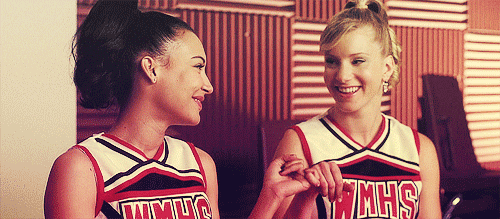
But much to our surprise, it wasn’t. Late in season 2, after dropping numerous background hints about Santana and Brittany using those fingers for more than just cutesy hand-holding, the show committed to it. Brittany begins to push Santana to evaluate her feelings about her, because while Brittany may be dense, she always saw right through Santana’s facades. The two of them seek out help from the school counselor in sorting out their feelings (guest star Gweneth Paltrow, another shining bright spot in season 2) and of course, they are told to sing a song about it, because this is Glee.
You know what’s coming, guys. Brace yourselves.
And of course, the scene that immediately follows it. Simply describing it doesn’t do it justice. You have to watch it yourself.
As I’ve talked about before, I didn’t really get into Glee until season 3, but I never really talked about why it took me so long to fall headfirst into the fandom, and what got me into it in the first place. The answer to the first question is I just didn’t care all that much about a male gay romance. Now, in retrospect, with the queer education and life experience I lacked when I was 19-20, I understand why Klaine was and is important. But it wasn’t personally relatable to me at the time. I am probably not the only one who made this assumption, but quite frankly I was 100% sure Glee was going to be the latest addition to a long list of bitter, queerbaity disappointments. I didn’t find Quinn Fabray’s pregnancy or Rachel and Finn’s star-crossed lovers nonsense to be compelling, and at the time Kurt’s coming out story was just a painful reminder of the support network I myself lacked in my family life. I was utterly convinced that everyone who was holding out hope on this show to be anything but a valiant yet failed attempt at queer representation was a moron. I’m sure somewhere in the depths of my Tumblr there are posts saying as much. But then this episode happened, and Tumblr might as well have imploded with the sheer weight of content about it. I stubbornly clung to being an asshole about it for a little while longer, but finally I caved and watched it myself.
I think every queer person can vividly remember the first time they really, truly saw a character that was exactly like them, that shared their life experience, without having to change a thing. So much of queer content is fanon, we often forget how much work we’re accustomed to doing to make the pieces fit. For me, Santana’s confession to Brittany was the first time I had ever truly seen myself in a television show. It was excruciating to watch, like having a mirror held up to literally every inch of insecurity and self-doubt I had ever felt in my life. Santana Lopez is a lot of things, but most importantly she is utterly and unequivocally real. Especially to me.
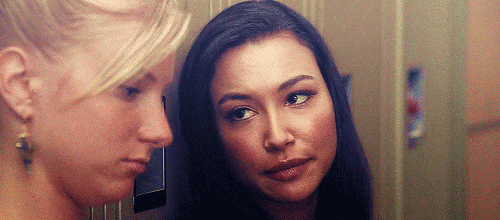
That was when I finally, begrudgingly, admitted there was something to this show. When I really got swept up in it was season 3, and that is why it’s my favorite season, but season 2 is truly something special. I realized, after a slice of humble pie and a bit of maturing, that being jaded and bitter about television and queer representation was going to get me nowhere. I had never really been into television before, and once Brittana became canon, it became painfully clear why. It wasn’t because I thought it was beneath me, though I was convinced that was why; that I was too smart for it. I had never related to it because I had never seen myself in it, and what little I had related to ended in tragedy. But Glee was different. So, so different. Brittana was different.
(Just for the record, if I ever get married, I am going to dance at my wedding to Santana’s cover of “Songbird.” This is a non-negotiable. If a woman sang this song to me, I’d literally be putty in her hands. Lady suitors take note.)
Never in a million years would I have expected to see something like this on my television. And really, with the exception of maybe Sanvers, nothing else has made me feel what Brittana does. And the most unbelievable part of it all is that it was never meant to happen in the first place.
Brittana is truly a testament to the power of modern fandom, and one of the greatest examples of how dramatically the internet and social media changed how fandoms interact with content creators. Brittana was the ship that fandom built, and we sailed it all the way into canon and an endgame, happy ending. I am sure it is not necessarily the first example of a creative team caving to fandom pressure, but it is certainly one of the most famous, and one of the first that is intrinsically tied to the modern fandom community format. Back in the dark days of the internet before Tumblr, Twitter, or Google, internet fandom existed in dark corners and sometimes even behind paywalls, especially queer fandoms. To say that queer fandom was in the closet is a massive understatement: fanfiction writers and fan artists used to get cease-and-desist letters from content creators. Some were even sued. But with the rise of Tumblr-style fandom communities, showrunners quickly realized that fans were an asset to be used, not a gang of dastardly copyright violators trying to steal their precious profits from them. The rise of Brittana’s shipping community, and Faberry’s, just happened to coincide with this shift in content creator attitudes, and this created a perfect storm where fans were not only being heard, but eventually catered to. It is amazing how validating Brittana was at the time, and to be honest, it’s still pretty damn validating now.
I’m going to stop here, because I really, truly want you to watch it for yourself, rather than let me explain it all to you. It is something best experienced in motion. It will make you laugh, it will make you cry, but it will leave you with a feeling of hope that is impossible to truly describe. While it is only in the back end of the season, and it is by no means the main plot of the show, if you are a lady loving lady you owe it to yourself to watch Brittana unfold, at least in Season 2 and 3. After the year we had, please treat yourself to something that will give you hope that someday you’ll find your Brittany or Santana.
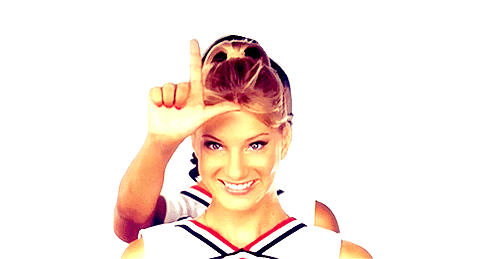
Conclusion
I know I complain a lot when I write articles. I can be sarcastic, abrasive, and sometimes downright mean (much like a certain latina lesbian I relate to so much.) But somewhere under the prickly, cactus-like exterior is the heart of a romantic, and season 2 of Glee speaks to that gooey center. While season 2’s queer content may seem hilariously tame by today’s standards, that’s kind of why I want you all to watch it: please, don’t forget how much has changed in so little time. But also, please care for yourselves, and treat yourselves to some happy endings. Klaine and Brittana may not be perfect, but they will warm your heart and put a smile on your face. I promise season 2 is 100% worth your time; if you watch no other season, watch this one. You won’t regret it.
I know I said last time I would do season 2 and 3 in one go, but we’re at almost 4,500 words now just for season 2 and I don’t want to steal Kylie and Julia’s crowns for Most Long-Winded Writer here at the Fandomentals. So, I will be back after Clexa Con with season 3, Glee‘s pride before the fall. See you next time!
